Mars Methane Mystery: Hidden Microbes or Geology?

TL;DR: NASA's Europa Clipper will map Europa's ice shell thickness by 2033, determining whether drilling through 5-30 kilometers of ice to reach an alien ocean is feasible within decades. Engineers have tested nuclear-powered cryobots that could melt through the ice in 300 days, potentially discovering extraterrestrial life.
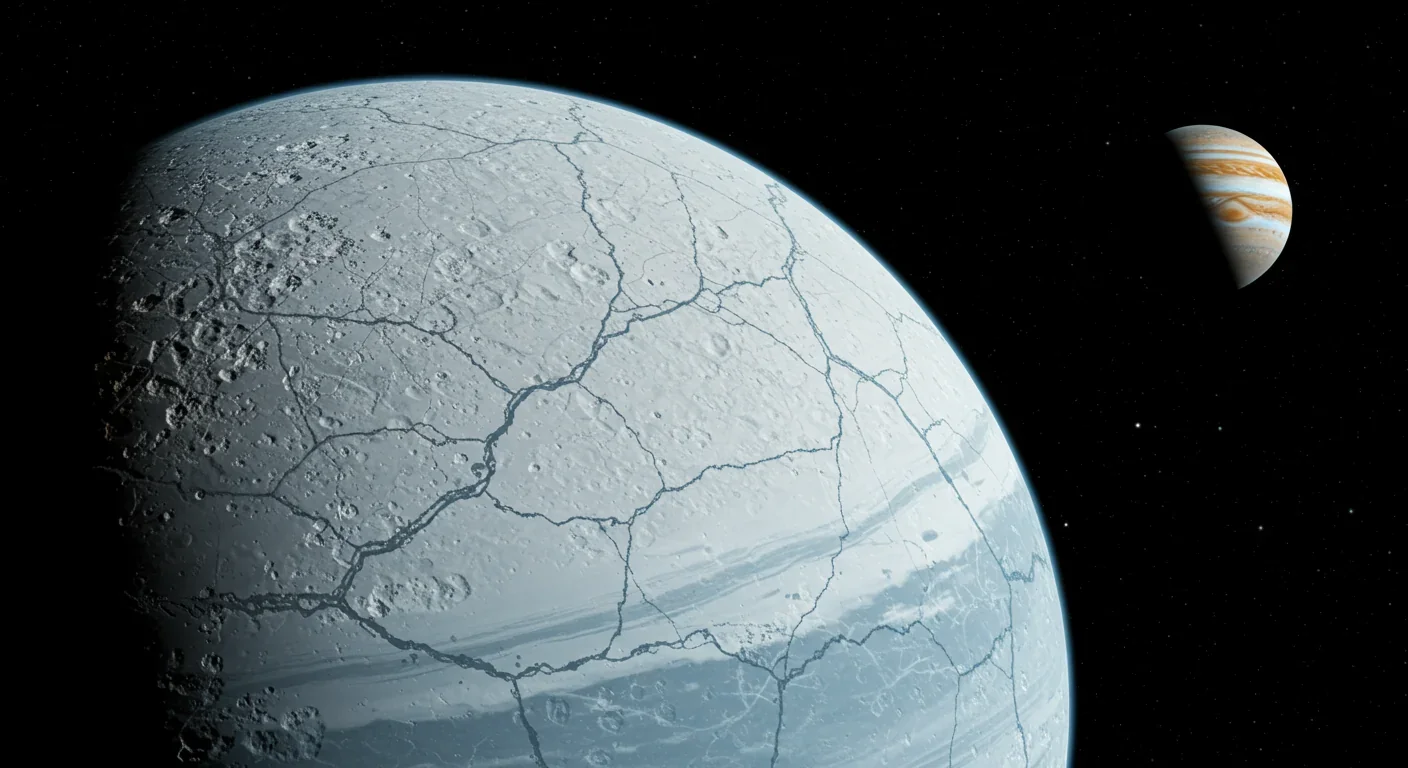
By 2035, humanity could send a nuclear-powered robot to melt through 30 kilometers of ice on Jupiter's moon Europa, reaching an alien ocean that's remained hidden since the dawn of the solar system. The question isn't whether we can do it—engineers have already tested prototype drills in Antarctic ice. The real question is what we'll find when we get there.
Europa represents our best shot at discovering extraterrestrial life within the next two decades. Unlike Mars with its ancient, dried-up riverbeds or distant exoplanets we can only glimpse through telescopes, Europa offers something tantalizing: a liquid ocean twice the volume of Earth's, heated by tidal forces, protected by an ice shell, and potentially harboring the chemistry needed for life. But there's a catch. That protective ice shell could be anywhere from a few kilometers to over 34 kilometers thick, and we won't know for sure until NASA's Europa Clipper arrives in 2030.
The difference between drilling through 5 kilometers versus 30 kilometers of ice isn't just a matter of time—it's the difference between a feasible mission and one that pushes the absolute limits of human engineering.
The uncertainty matters. A lot. Because the difference between drilling through 5 kilometers versus 30 kilometers isn't just a matter of time—it's the difference between a feasible mission and one that pushes the absolute limits of human engineering.
Scientists have been trying to measure Europa's ice shell thickness since Galileo spacecraft observations in the 1990s revealed tantalizing hints of a subsurface ocean. The estimates vary wildly because measuring ice thickness from orbit is like trying to guess how deep a frozen lake is by throwing rocks at it from an airplane.
"Some people think it's a few kilometers thick, and lots of people think it's tens of kilometers thick."
— Don Blankenship, Principal Investigator for REASON
That's not a small margin of error.
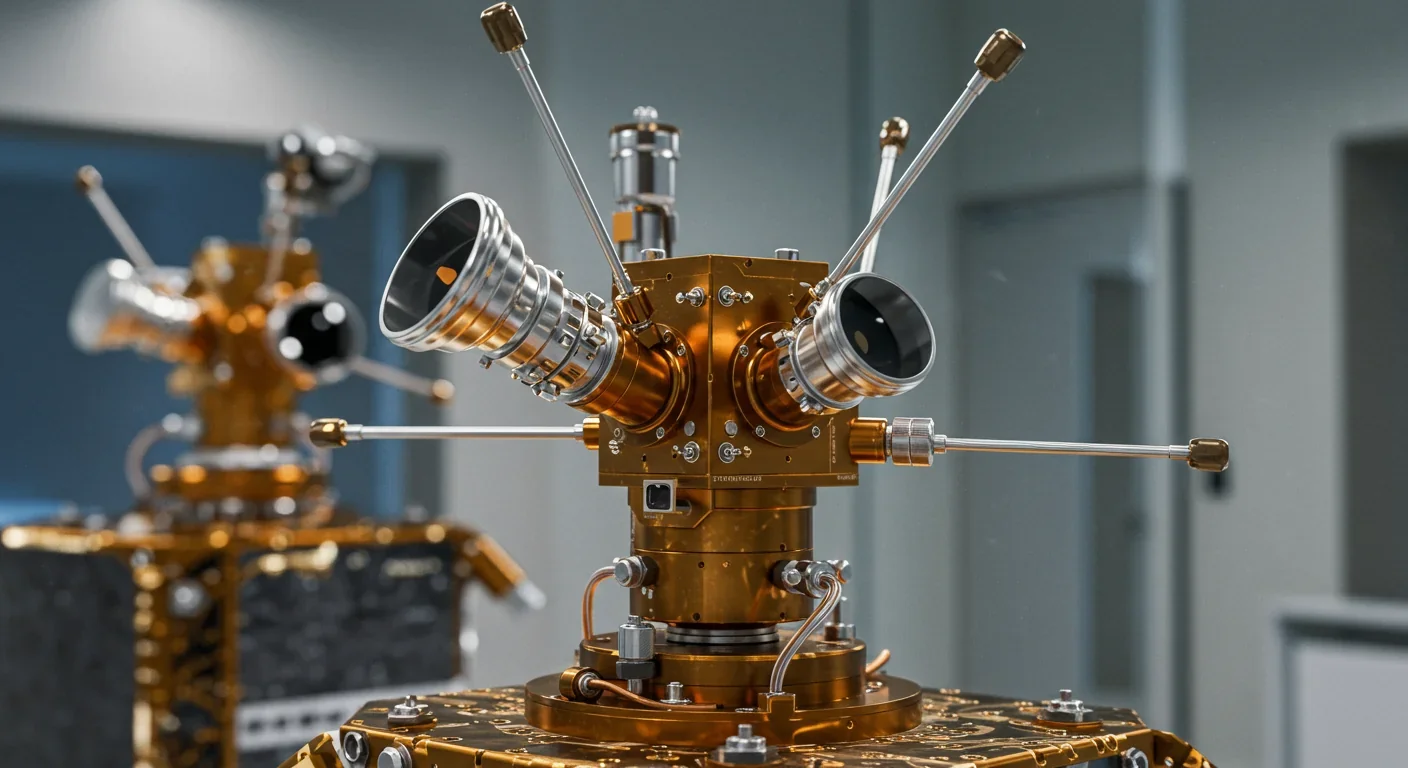
Europa Clipper will change that. The spacecraft launched in October 2024 and will reach Jupiter in April 2030, where it will conduct 49 close flybys of Europa at altitudes as low as 25 kilometers above the surface. Over its 3.5-year mission, it will build the first comprehensive map of Europa's ice shell using multiple measurement techniques that work together like a medical CT scan.
The REASON radar is the star of the show. It transmits radio waves at two different frequencies—9 MHz and 60 MHz—that penetrate ice and bounce back when they hit layers with different densities. By measuring the time between transmission and return, and knowing how fast radio waves travel through ice, scientists can calculate depth. The dual-frequency approach overcomes a limitation of single-frequency radar: different ice structures block different wavelengths, so having two frequencies ensures no blind spots.
But REASON doesn't work alone. The Europa Clipper Magnetometer (ECM) detects magnetic fields induced by Jupiter's magnetosphere interacting with Europa's salty ocean, providing independent confirmation of ocean depth. Gravity measurements during flybys reveal density variations that hint at ice thickness. High-resolution cameras map surface features like chaos terrain—jumbled regions where the ice has cracked and refrozen—offering clues about recent interactions between the ice shell and the ocean below.
Together, these instruments will finally give mission planners the data they desperately need: where is the ice thinnest, where might pockets of liquid water exist within the shell, and most importantly, how much energy and time would it take to drill through?
The ice shell thickness isn't just an academic curiosity. It's the single most important variable in designing a mission to access Europa's ocean because it directly dictates power requirements, mission duration, landing site selection, and planetary protection protocols.
Consider this: a nuclear-powered cryobot could melt through 24 kilometers of ice in roughly 300 days, according to estimates from Stone Aerospace, which has been developing drilling technology under NASA funding. That's drilling at roughly 1 to 2 meters per hour, assuming the ice is pure and uniform—which it almost certainly isn't.
If Europa's ice is only 5 kilometers thick in some regions, a drilling mission becomes dramatically more feasible. Three hundred days becomes 60 days. Less time drilling means less power required, lighter equipment, reduced contamination risk, and simpler mission architecture. You could potentially use a laser-powered system like NASA's VALKYRIE cryobot, which avoids the political and regulatory complications of launching nuclear material into space.
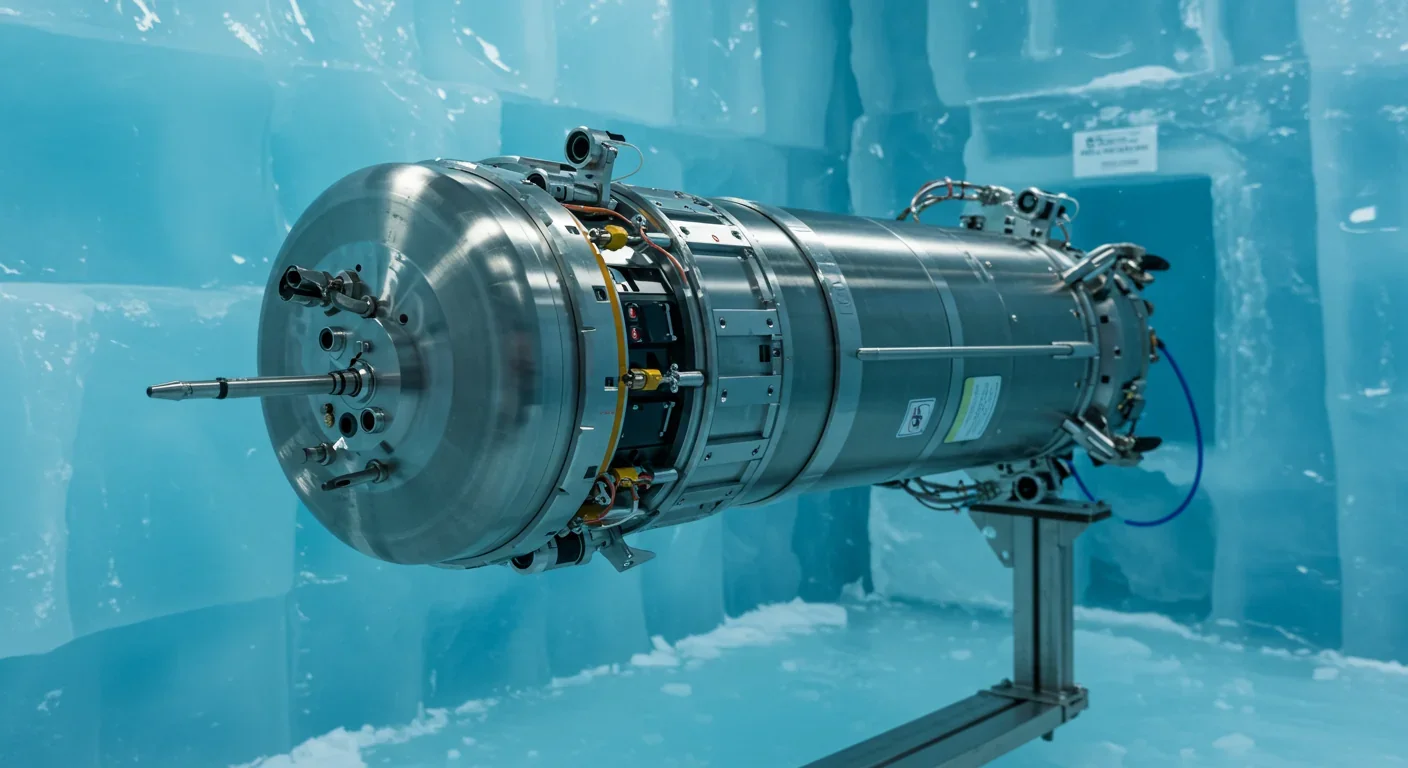
But if the ice is 30 kilometers thick everywhere? Now you're talking about nearly two years of continuous drilling through an environment where surface temperatures hover around -160°C, radiation levels reach 5,400 millisieverts per day—enough to kill a human in hours—and your robot is entirely on its own, descending through ice that might contain sediment from ancient comet impacts, salt deposits from ocean upwelling, or structural cracks that could collapse.
Suddenly, nuclear power isn't optional. You need a miniature reactor that can run continuously for years, plus redundant systems, autonomous navigation, real-time decision-making algorithms, and probably a tether back to the surface for communication and data transmission. The engineering complexity—and cost—multiplies exponentially.
Europa Clipper's ice thickness measurements will determine whether an ocean access mission happens in the 2030s or gets pushed to the 2040s or beyond.
That's why Europa Clipper's ice thickness measurements will determine whether an ocean access mission happens in the 2030s or gets pushed to the 2040s or beyond.
Drilling through kilometers of alien ice in one of the most hostile environments in the solar system isn't something you can figure out in a lab. Which is why engineers have spent decades testing cryobots in the one place on Earth that comes close to Europa's conditions: Antarctica.
The cryobot concept goes back to the 1960s when Klaus Philberth first experimented with hot-water drills in Greenland, achieving penetration depths over 1,000 meters. The principle is elegantly simple: use heat to melt ice, let gravity pull the probe downward, and melt more ice. But the execution is brutally complex.
Modern cryobots like Stone Aerospace's Valkyrie prototype represent decades of refinement. Picture a torpedo-shaped probe about 3 meters long and 25 centimeters in diameter, packed with instruments, power systems, computers, and most importantly, a heat source. Valkyrie uses high-energy lasers fed through fiber-optic cables to melt ice, avoiding the nuclear power source that would face regulatory restrictions in Antarctica.
The probe sprays hot water through nozzles in its tapered nose cone, melting a path forward. The meltwater gets recirculated back into the heating system, creating a closed loop. But here's where it gets clever: lateral jets shoot water sideways, creating pockets along the probe's body. These side pockets serve two critical functions—they allow the probe to steer by varying thrust, and they provide spaces where sediment and debris can accumulate without blocking the probe's descent.
That sediment problem nearly derailed early tests. When Stone Aerospace deployed a prototype on Alaska's Matanuska Glacier, the drill encountered layers of ancient volcanic ash and rock dust trapped in the ice. The debris accumulated in front of the nose cone like snow in front of a plow, eventually blocking forward progress entirely. The side-pocket solution came from those failures—engineers realized they needed to give sediment somewhere to go.
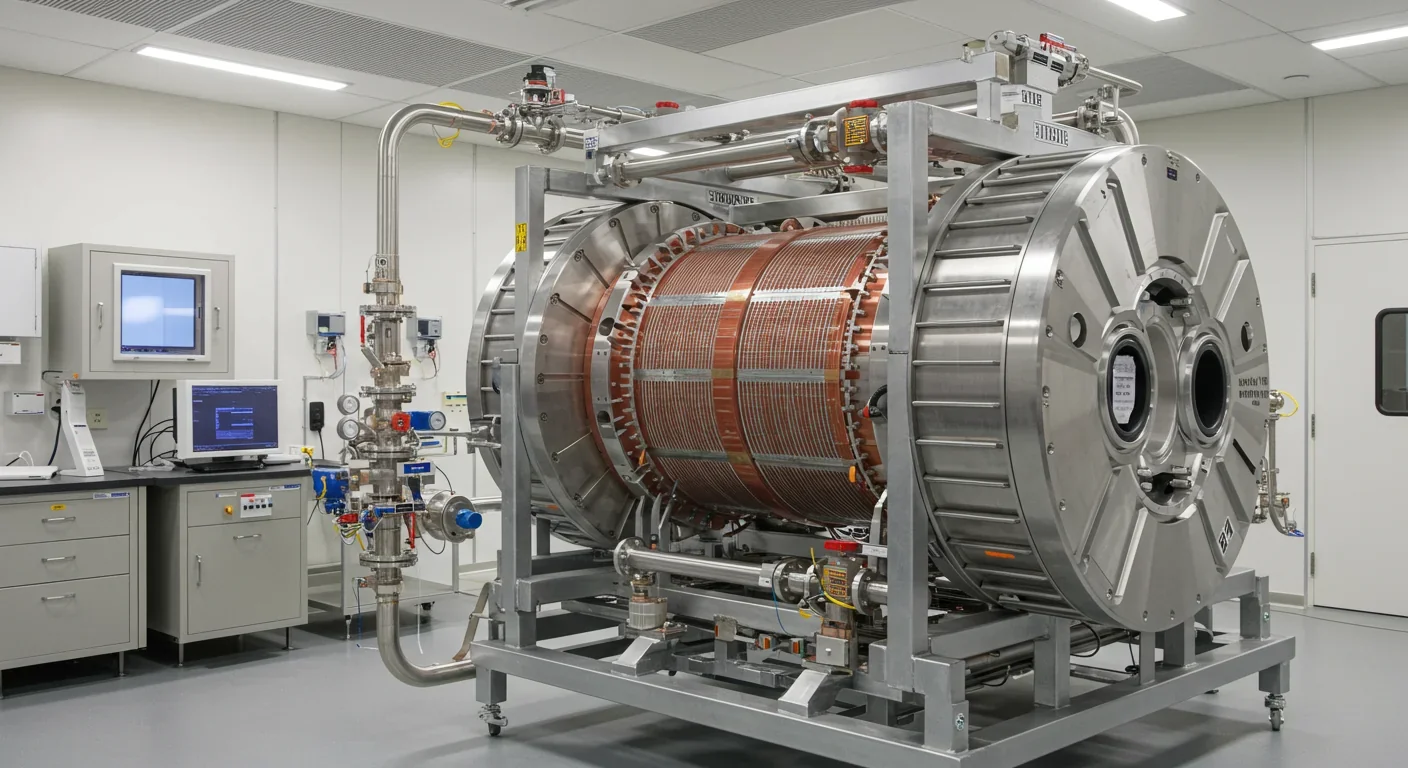
Antarctica's Lake Vostok became the ultimate proving ground. Located under more than 4 kilometers of ice, Vostok is the deepest subglacial lake on Earth and the closest analog we have to Europa's environment. Russian researchers drilled through the ice using conventional methods in 2012, but NASA has used the site to test cryobot technology. Prototype cryobots successfully melted through 1,000 meters of Antarctic ice during trials, demonstrating that autonomous descent through kilometers of ice is technically feasible.
The latest iteration, called SPINDLE (Systematic Platform Investigation of Nereid-Dwelling Life in Enceladus), integrates the laser-powered VALKYRIE drilling system with ARTEMIS, an autonomous underwater submersible. The concept is straightforward: drill through the ice, then release a submarine to explore the ocean below. If it works in Earth's subglacial lakes, the same approach could work on Europa or Saturn's moon Enceladus.
All these drilling concepts share one overwhelming constraint: power. Melting ice takes enormous amounts of energy, and Europa offers exactly zero convenient power sources. No sunlight reaches the surface with enough intensity for solar panels. No atmosphere for wind or radioisotope heating. No volcanic vents. Just ice, radiation, and Jupiter's magnetic field.
A Europa drilling mission would need to carry all its power from Earth, either as chemical fuel, batteries, or a nuclear reactor. Europa Clipper demonstrates the power budget challenge perfectly. The spacecraft uses massive solar arrays spanning over 30 meters that generate only about 150 watts continuously at Jupiter's distance from the sun—barely enough to power a couple of incandescent light bulbs. For perspective, that's five times less power per square meter than the International Space Station's solar panels receive in Earth orbit.
A drilling cryobot needs orders of magnitude more power. Melting through 24 kilometers of ice in 300 days requires sustained power output measured in kilowatts, not watts. That's why serious drilling proposals all involve nuclear power, specifically miniature fission reactors similar to those used on Mars rovers but scaled up significantly.
NASA's Kilopower project has developed small reactors producing 1 to 10 kilowatts continuously for years—exactly the power range needed for a cryobot. The reactor uses a uranium core about the size of a roll of paper towels, cooled by heat pipes and shielded by layers of radiation-absorbing material. It's compact enough to fit in a lander and powerful enough to drive a drill through kilometers of ice while running instruments, computers, and communication systems.
But nuclear power introduces new complications: launch approval, planetary protection concerns, heat management, and shielding. A reactor produces heat constantly, whether you need it or not. On the surface, excess heat radiates into space. Inside an ice shell, you're literally melting your way through your own environment, and any heat not directed at drilling is wasted—or worse, creates unstable melt zones around the probe.
The alternative is laser power delivered through fiber-optic tethers, the approach VALKYRIE uses. It elegantly sidesteps nuclear concerns and provides precise power control. But it requires maintaining a tether from the surface all the way to the ocean—potentially tens of kilometers of cable that must unspool reliably, not freeze, not break, and not get severed by shifting ice. It's technically possible. It's also mechanically terrifying.
All this engineering obsession serves one purpose: reaching Europa's ocean to search for life. Not necessarily intelligent life or even complex organisms, but the chemical signatures and basic metabolic processes that would prove life exists beyond Earth.
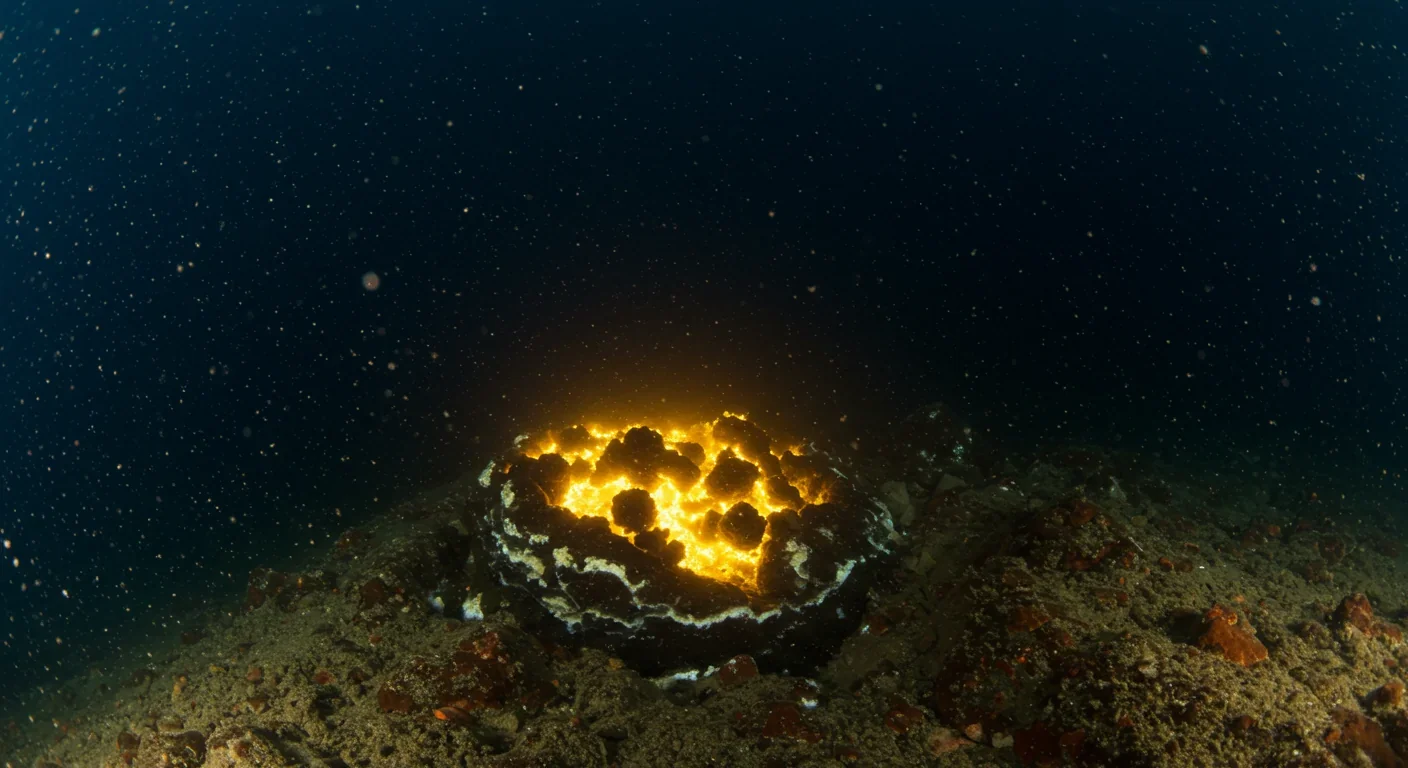
The case for Europa as a habitable world is compelling. Evidence accumulated over decades points to a global ocean containing twice the water volume of Earth's oceans, kept liquid by tidal heating as Jupiter's gravity kneads the moon's interior. The ice shell acts as both protection from Jupiter's radiation and a potential nutrient delivery system, as surface ice slowly cycles down to the ocean, carrying oxidants and minerals.
Europa Clipper will search for plumes of water vapor erupting through cracks in the ice—geysers like those observed on Enceladus that would provide direct samples of ocean material without drilling. The spacecraft's UV spectrograph can detect the faint glow of water molecules, while the magnetometer tracks ionized particles. If plumes exist and erupt regularly, a lander could simply park near a vent and wait for samples to come to the surface.
But plumes are unpredictable. Galileo spacecraft data from the 1990s hinted at plume activity, but later observations haven't confirmed regular eruptions. If Europa doesn't cooperate by launching ocean material into space, we'll have to go get it ourselves—which brings us back to drilling.
A cryobot descending through Europa's ice wouldn't just be drilling blindly. Modern designs incorporate radar for navigation, spectrometers for chemical analysis of ice layers, cameras for imaging internal structures, and sampling systems for collecting meltwater. The journey through the ice shell is itself a scientific treasure: every layer tells a story about Europa's geological history, ocean composition, and surface processes.
When the probe finally breaks through into the ocean—the moment mission scientists dream about—it would either release a small submersible or transition into swimming mode itself. The submarine would need lights, cameras, sonar, sampling arms, and enough power to explore for hours or days before its reactor runs out or communication is lost.
"In Earth's oceans, life exists around deep-sea hydrothermal vents, in frozen lakes beneath Antarctic ice, in underground aquifers miles below the surface. Life is remarkably adaptable."
— Astrobiological observations from terrestrial extremophiles
What might it find? In Earth's oceans, life exists around deep-sea hydrothermal vents, in frozen lakes beneath Antarctic ice, in underground aquifers miles below the surface. Life is remarkably adaptable, thriving in conditions that seem impossible. Europa's ocean likely has hydrothermal vents where water interacts with a rocky seafloor, creating the same chemistry that may have sparked life on Earth.
The first evidence might not be living organisms but chemical signatures: organic molecules, metabolic byproducts, concentration gradients that suggest biological activity. On Earth, life leaves fingerprints in the water—phosphate accumulations, amino acid ratios, isotope patterns. If Europa's ocean has life, those same fingerprints would exist.
Or the submarine might find nothing. Sterile water, rocky vents, chemistry but no biology. That result would be scientifically valuable too, helping us understand the conditions necessary for life and how rare or common living systems might be in the universe.
When could a drilling mission actually launch? The honest answer: probably not before 2040.
Europa Clipper won't arrive until 2030 and needs three years to complete its mapping mission. Data analysis takes more time. Mission proposals require years to develop, undergo peer review, compete for funding, and receive NASA approval. Then you need to build the spacecraft, test it exhaustively, and wait for the right launch window when Earth and Jupiter align favorably.
ESA's Jupiter Icy Moons Explorer (JUICE) mission launched in 2023 and will reach the Jovian system in 2031, conducting flybys of Europa before settling into orbit around Ganymede. JUICE carries ice-penetrating radar and will contribute additional ice thickness measurements, but it's not designed for drilling.
No space agency has formally approved a Europa drilling mission. NASA has funded technology development through programs like Small Business Innovation Research grants—the funding that supported Stone Aerospace's Valkyrie and Mjolnir concepts—but these are research projects, not mission commitments.
The geopolitical landscape matters too. Space exploration increasingly involves international partnerships, and a Europa drilling mission would likely require collaboration between NASA, ESA, and possibly other agencies. The International Space Station proves that such partnerships can work. The James Webb Space Telescope shows they can produce extraordinary results. But coordination takes time, and political priorities shift.
China has announced intentions to explore Jupiter's moons, and private space companies like SpaceX have expressed interest in outer solar system missions. Competition could accelerate timelines—nobody wants to finish second in the race to discover extraterrestrial life. But competition also creates redundancy and duplication of effort.
Realistically, we're looking at a Europa drilling mission launching sometime in the late 2030s or early 2040s, arriving in the 2040s or 2050s. That seems far away. It's also breathtakingly fast compared to the pace of previous deep space exploration.
One final challenge looms over every drilling proposal: planetary protection. The terrifying possibility that Earth life could contaminate Europa's ocean, either destroying native life or making it impossible to determine what was indigenous versus what we brought.
The current protocol requires missions to Europa's subsurface to be sterilized to the same standards as Mars sample-return missions—essentially, no more than 0.03 bacterial spores per square meter of spacecraft surface, or a less than 1 in 10,000 chance of contaminating the ocean with Earth microbes.
That's an incredibly stringent requirement. Sterilization typically involves heating equipment to temperatures exceeding 300°C, bathing it in peroxide or other chemicals, and assembling it in ultra-clean rooms. Every seal, circuit board, computer chip, and cable must survive the process. Modern electronics generally don't appreciate being baked at temperatures that would cook pizza.
The paradox is obvious: the same autonomous systems, advanced sensors, and sophisticated sampling equipment that make a drilling mission scientifically valuable are also the hardest to sterilize. Radiation-hardened computers, fiber-optic cables, and miniature reactors all contain materials sensitive to the harsh cleaning protocols.
Some scientists argue that Europa's radiation environment provides natural sterilization—any contamination on the lander's surface would be killed by radiation within days or weeks. But subsurface contamination is a different story.
Some scientists argue that Europa's radiation environment provides natural sterilization—any contamination on the lander's surface would be killed by radiation within days or weeks. But subsurface contamination is a different story. Once the cryobot enters the ice, it's shielded from radiation and creates a warm, wet environment all around itself—ideal conditions for any surviving Earth microbes.
Solutions exist but add complexity. You could sterilize the probe after landing by exposing it to hard vacuum and solar UV for an extended period. You could design the cryobot to heat-sterilize its outer surface just before drilling begins. You could use redundant filtration systems to ensure meltwater doesn't carry microbes from the surface into the ocean. Each approach works. Each adds mass, power requirements, failure modes, and cost.
The International Committee on Space Research (COSPAR) maintains planetary protection guidelines, but as missions become more ambitious, those guidelines will need updating. Finding the balance between scientific ambition and ethical responsibility remains one of the field's ongoing challenges.
Picture the moment: A grainy video feed, transmitted across hundreds of millions of kilometers, showing a submarine's lights illuminating dark water for the first time. Not Earth's ocean. Not a water tank at NASA. Europa's alien sea, hidden beneath ice since before multicellular life existed on Earth.
The camera pans across a rocky seafloor. Sediment drifts in the current generated by hydrothermal vents. Chemical sensors detect organic molecules. Spectrometers identify amino acids in concentrations that can't be explained by abiotic processes. Then the camera catches movement—something small, darting between rocks, responding to the light.
That's the optimistic scenario. The universe-changing, philosophy-rewriting, civilization-shaking discovery that we're not alone.
Or maybe the submarine finds sterile water, beautiful geology, interesting chemistry, and no life. That result would still reshape our understanding of habitability, helping calibrate our expectations for life's prevalence in the cosmos. It would confirm that liquid water and energy aren't sufficient—you need the right chemistry, the right environmental stability, the right timing.
Either way, drilling through Europa's ice represents humanity's most ambitious attempt yet to answer the oldest question we've asked: Are we alone? The engineering is audacious. The science is profound. The timeline stretches across decades. But the potential payoff—discovering that life exists beyond Earth—makes every technical challenge, every budget battle, every year of patience worthwhile.
By the time Europa Clipper completes its mission and a drilling probe begins its journey, some of you reading this will be the engineers designing the next generation of cryobots, the mission scientists planning sampling strategies, or the astrobiologists analyzing the first data from Europa's ocean. The question isn't whether we'll drill through that ice. It's what we'll find when we finally break through into the alien sea waiting below.

Curiosity rover detects mysterious methane spikes on Mars that vanish within hours, defying atmospheric models. Scientists debate whether the source is hidden microbial life or geological processes, while new research reveals UV-activated dust rapidly destroys the gas.

CMA is a selective cellular cleanup system that targets damaged proteins for degradation. As we age, CMA declines—leading to toxic protein accumulation and neurodegeneration. Scientists are developing therapies to restore CMA function and potentially prevent brain diseases.

Intercropping boosts farm yields by 20-50% by growing multiple crops together, using complementary resource use, nitrogen fixation, and pest suppression to build resilience against climate shocks while reducing costs.

The Baader-Meinhof phenomenon explains why newly learned information suddenly seems everywhere. This frequency illusion results from selective attention and confirmation bias—adaptive evolutionary mechanisms now amplified by social media algorithms.

Plants and soil microbes form powerful partnerships that can clean contaminated soil at a fraction of traditional costs. These phytoremediation networks use biological processes to extract, degrade, or stabilize toxic pollutants, offering a sustainable alternative to excavation for brownfields and agricultural land.

Renters pay mortgage-equivalent amounts but build zero wealth, creating a 40x wealth gap with homeowners. Institutional investors have transformed housing into a wealth extraction mechanism where working families transfer $720,000+ over 30 years while property owners accumulate equity and generational wealth.

AlphaGo revolutionized AI by defeating world champion Lee Sedol through reinforcement learning and neural networks. Its successor, AlphaGo Zero, learned purely through self-play, discovering strategies superior to millennia of human knowledge—opening new frontiers in AI applications across healthcare, robotics, and optimization.